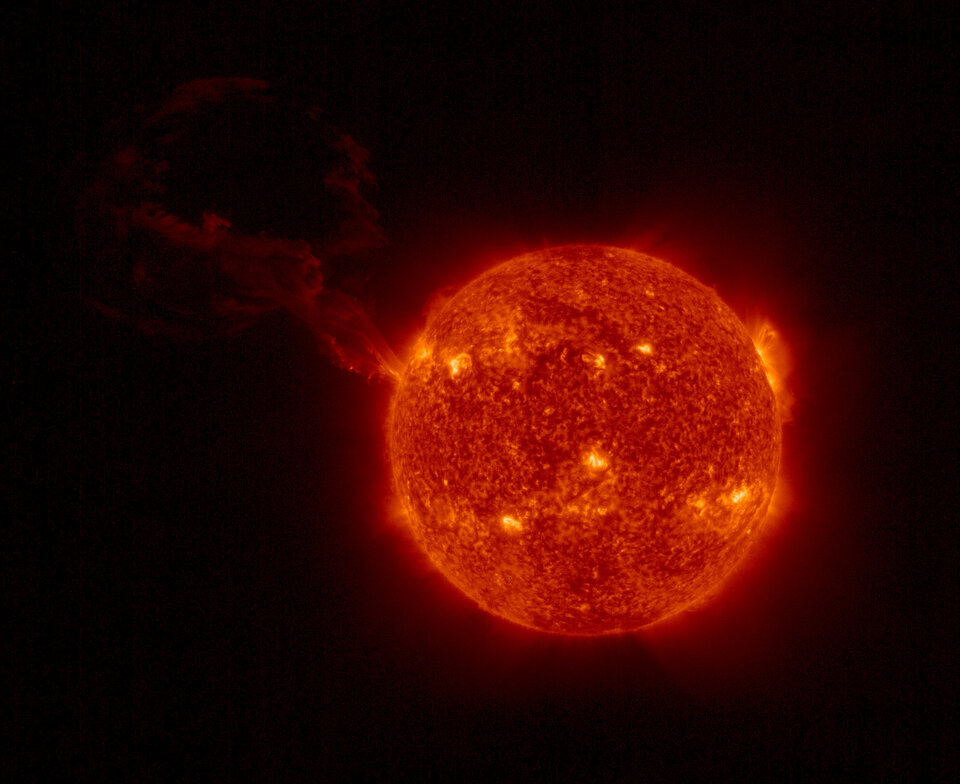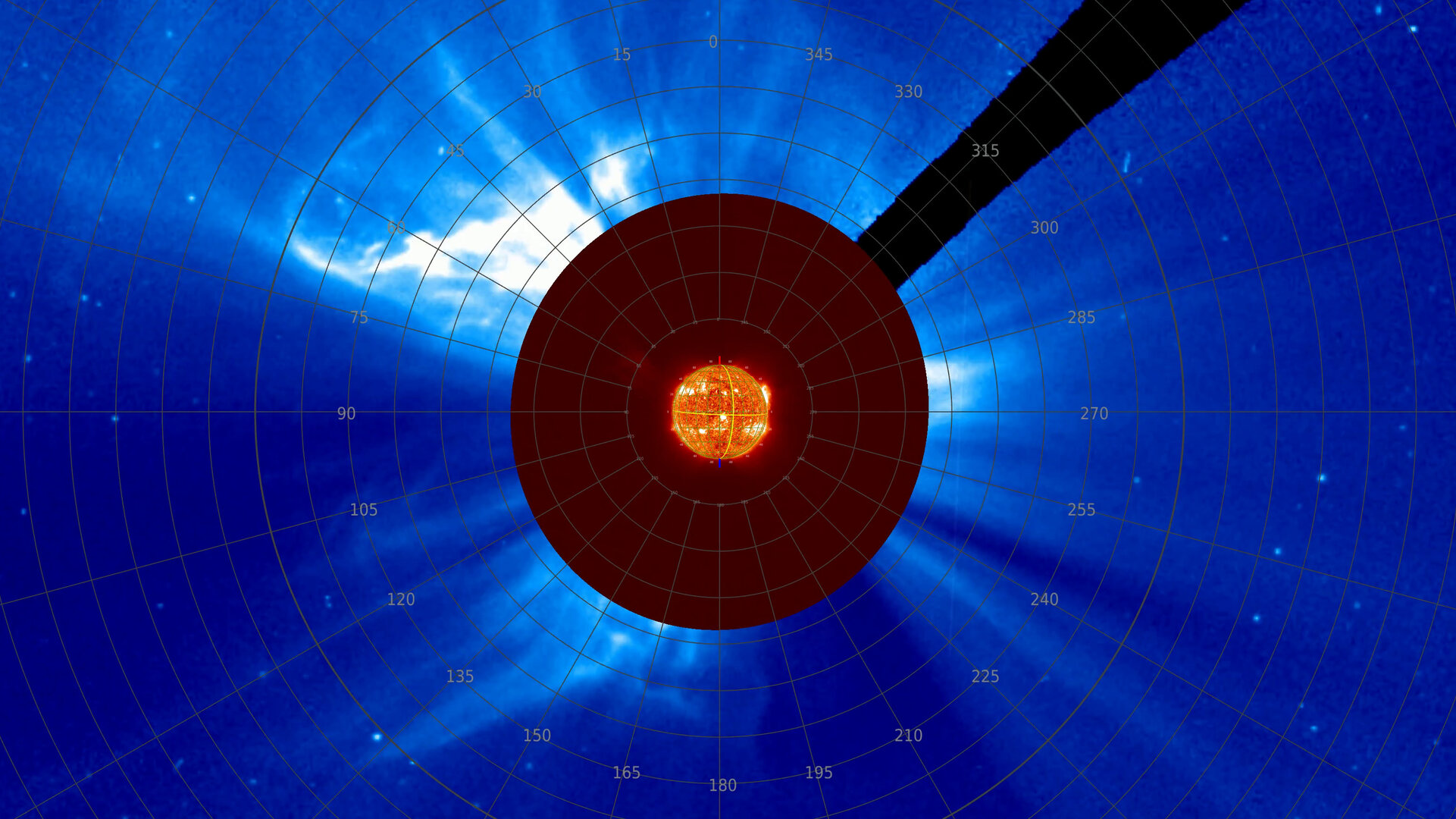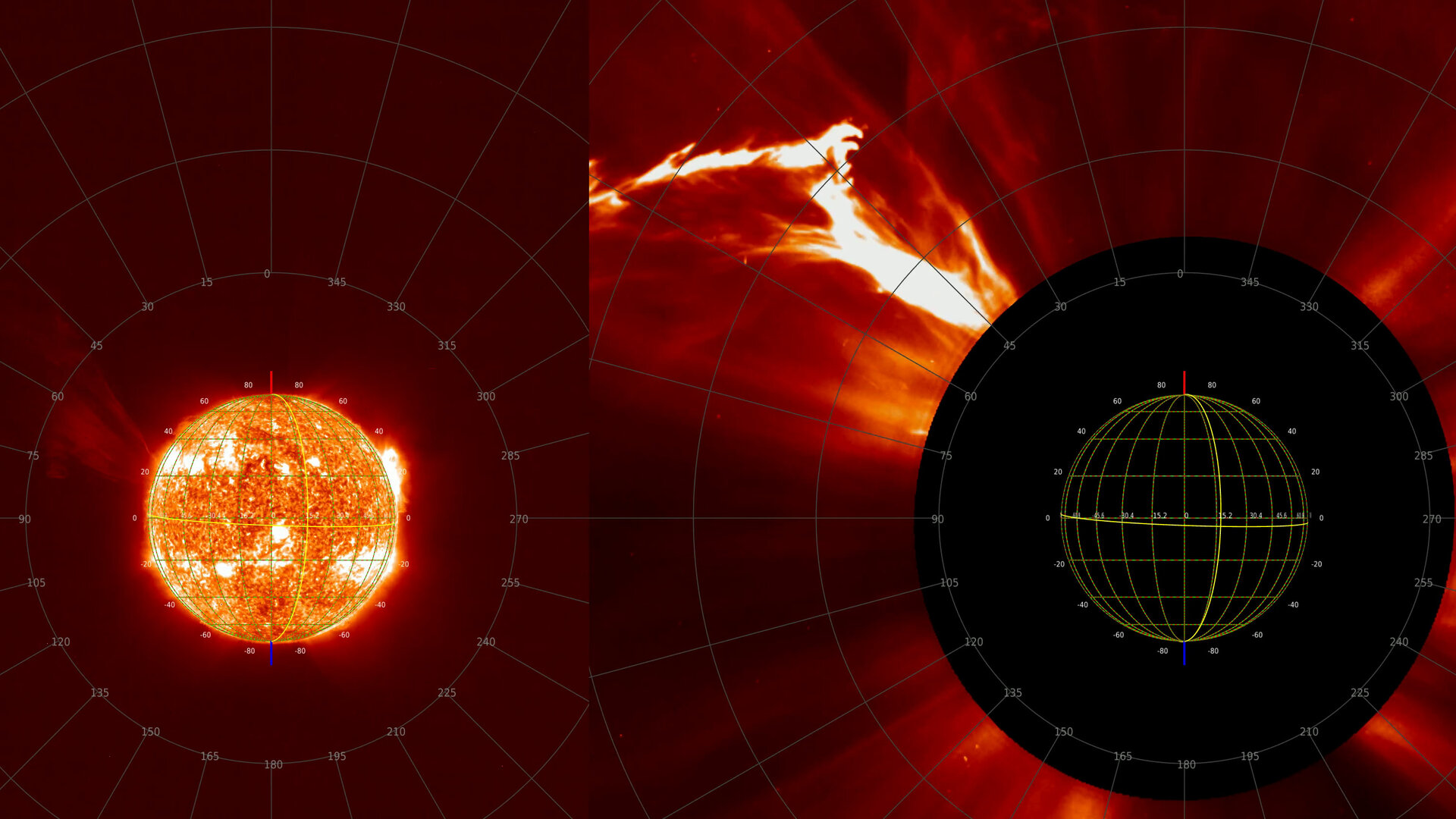Global S&T Development Trend Analysis Platform of Resources and Environment
| Giant solar eruption seen by Solar Orbiter | |
| admin | |
| 2022-02-18 | |
| 发布年 | 2022 |
| 语种 | 英语 |
| 国家 | 欧洲 |
| 领域 | 地球科学 |
| 正文(英文) | The ESA/NASA Solar Orbiter spacecraft has captured the largest solar prominence eruption ever observed in a single image together with the full solar disc. Solar prominences are large structures of tangled magnetic field lines that keep dense concentrations of solar plasma suspended above the Sun’s surface, sometimes taking the form of arching loops. They are often associated with coronal mass ejections, which if directed towards Earth, can wreak havoc with our technology and everyday lives. This latest event took place on 15 February and extended millions of kilometres into space. The coronal mass ejection was not directed at Earth. In fact, it is travelling away from us. There is no signature of the eruption on the solar disc facing the spacecraft – which is currently approaching the Earth-Sun line – meaning that it must have originated from the side of the Sun facing away from us. 
The imagery was captured by the ‘Full Sun Imager’ (FSI) of the Extreme Ultraviolet Imager (EUI) on Solar Orbiter. FSI is designed to look at the full solar disc even during close passages of the Sun, such as during the upcoming perihelion passage next month. At closest approach on 26 March, which will see the spacecraft pass within about 0.3 times the Sun-Earth distance, the Sun will fill a much larger portion of the telescope’s field of view. Right now, there is still a lot of ‘viewing margin’ around the disc, enabling stunning detail to be captured by FSI out to about 3.5 million kilometres, equivalent to five times the radius of the Sun. 

Solar Orbiter and SOHO’s view of a giant eruption – wide view
Access the video Other space telescopes such as the ESA/NASA SOHO satellite frequently see solar activity like this, but either closer to the Sun, or further out by means of an occulter, which blocks out the glare of the Sun’s disc to enable detailed imagery of the corona itself. Thus, the prominence observed by Solar Orbiter is the largest ever event of its kind to be captured in a single field of view together with the solar disc, opening up new possibilities to see how events like these connect to the solar disc for the first time. At the same time, SOHO can provide complementary views to even larger distances. 

Solar Orbiter and SOHO’s view of a giant eruption - side by side
Access the video Other space missions were also watching the event, including NASA’s Parker Solar Probe. Next week, Solar Orbiter and Parker Solar Probe will perform dedicated joint observations during Parker’s perihelion passage. Even spacecraft not dedicated to solar science felt its blast – the ESA/JAXA BepiColombo mission, currently in the vicinity of Mercury’s orbit – detected a massive increase in the readings for electrons, protons, and heavy ions with its radiation monitor. And while this event did not send a blast of deadly particles towards Earth, it is an important reminder of the unpredictable nature of the Sun and the importance of understanding and monitoring its behaviour. Together with ESA’s future dedicated space weather mission Vigil, which will provide unique views of events like these, we can better protect our home planet from the Sun’s violent outbursts. For more information, please contact:
ESA media relations |
| URL | 查看原文 |
| 来源平台 | European Space Agency |
| 文献类型 | 新闻 |
| 条目标识符 | http://119.78.100.173/C666/handle/2XK7JSWQ/346258 |
| 专题 | 地球科学 |
| 推荐引用方式 GB/T 7714 | admin. Giant solar eruption seen by Solar Orbiter. 2022. |
| 条目包含的文件 | 条目无相关文件。 | |||||
| 个性服务 |
| 推荐该条目 |
| 保存到收藏夹 |
| 查看访问统计 |
| 导出为Endnote文件 |
| 谷歌学术 |
| 谷歌学术中相似的文章 |
| [admin]的文章 |
| 百度学术 |
| 百度学术中相似的文章 |
| [admin]的文章 |
| 必应学术 |
| 必应学术中相似的文章 |
| [admin]的文章 |
| 相关权益政策 |
| 暂无数据 |
| 收藏/分享 |
除非特别说明,本系统中所有内容都受版权保护,并保留所有权利。
修改评论